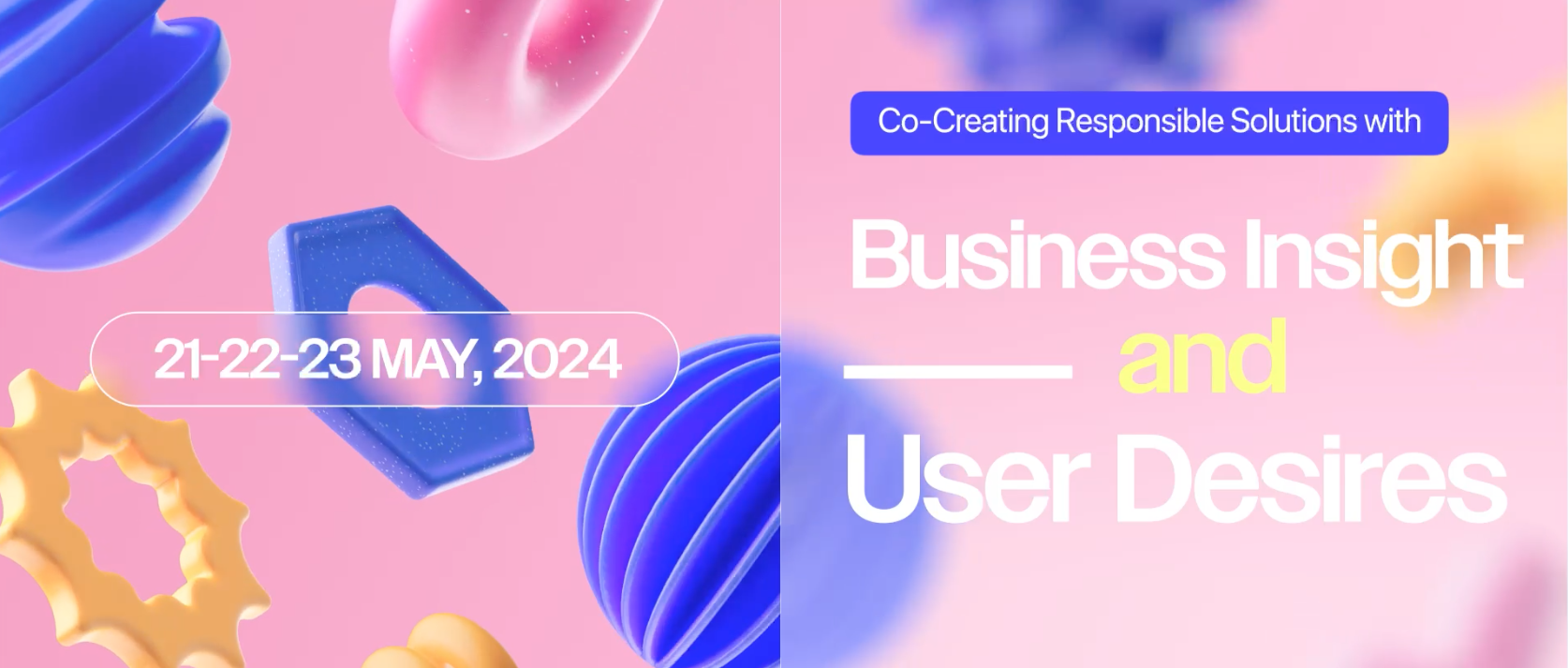UXistanbul 2024: Product Mastery Through UX Design
Written by Anthony Austin
Credit: UXistanbul
The UXistanbul 2024 conference, held online from May 21 to May 23, celebrated its 10th year as Turkey’s leading event in user experience design. This year’s theme, “Unleashing Product Mastery,” perfectly captured the evolving role of UX in driving product innovation. With UX and business analysis (BA) professionals from all over the world in attendance, the event explored how these two disciplines intersect to create more intuitive, user-centered products. This year’s conference offered a glimpse into the future of UX, with sessions covering topics such as AI, Web3, product strategy, and neuroscience.
A Marriage of UX and Business Analysis: Unleashing Product Mastery
What set UXistanbul 2024 apart was its concurrent running with BAistanbul, creating a rich dialogue between UX design and business analysis. Together, these fields are reshaping the way organizations approach product design. The shared theme of "Unleashing Product Mastery" emphasized that mastering product design goes beyond creating user-friendly interfaces—it requires a deep understanding of both user needs and business goals.
One of the most anticipated talks was the opening keynote by Reydan Yaşar and Meltem Bayrak, where they introduced the BA-UX Manifesto. The manifesto encouraged collaboration between BA and UX professionals to design user-centric products that meet both user and business objectives(ADP)(BAistanbul Conference). This keynote set the tone for the conference, inspiring attendees to think critically about how business analysis can elevate UX design and vice versa.
Keynote Highlights: Thought Leadership at Its Best
UXistanbul 2024 featured a stellar lineup of more than 20 industry leaders sharing their expertise. From UX psychology to AI product management, the topics covered represented the cutting edge of product design.
Indi Young, a founding partner of Adaptive Path, delivered an insightful session titled "Listening Deeply: Supporting a Variety of Thinking Styles." She delved into how UX designers can tailor their products to accommodate different cognitive processes. The idea of listening deeply to users’ mental models aligns with the concept of empathy-driven design—a practice gaining traction in the UX community. By addressing a broader spectrum of thinking styles, designers can create products that resonate more deeply with diverse users.
Rhishikesh Thakur, an AI Product Manager at SAP, presented a keynote on AI strategy in product management. His session emphasized the importance of AI not only as a technological tool but also as a strategic component that enhances user experience. Thakur provided real-world examples of AI-driven products and how these innovations are reshaping customer interactions, especially in high-touch industries.
Anna Kochanowska, Lead Business Analyst at Roche, discussed elevating UX and BA toolkits through product thinking. This session offered valuable insights into the practical application of product thinking, particularly in heavily regulated industries like healthcare. Kochanowska explained how UX designers and business analysts can collaborate to ensure compliance while maintaining user-centered design.
Vaida Pakulyte, UX Lead at Technigo, took the audience on a deep dive into the psychology and neuroscience behind UX design. Her talk, titled "Building Products That Resonate," provided a detailed exploration of how cognitive science can be used to optimize the user experience. This growing field of UX neuroscience focuses on understanding how users' brains interact with design elements, a critical component for improving engagement and satisfaction
Presentation Sources: BAistanbul Conference
Credit: UXistanbul
The Confluence of AI, Product Design, and Web3
One of the recurring themes throughout the conference was the role of artificial intelligence (AI) in shaping the future of product design. As AI becomes more sophisticated, it is being increasingly integrated into user experiences. Sessions such as "AI Product Management" by Rhishikesh Thakur demonstrated how AI can predict user behaviors, personalize experiences, and drive user satisfaction. However, the ethical implications of AI were not overlooked. Conversations around responsible AI encouraged designers to think critically about how their AI implementations could impact users and society at large
Additionally, the conference touched on emerging technologies like Web3 and the Metaverse. These trends are creating new opportunities for UX designers to explore virtual environments, decentralized applications, and the unique user interactions that these technologies entail. The exploration of NFTs and metaverse environments in product design gave attendees a glimpse into what the future might hold for UX in the digital age.
Collaboration, Networking, and the Future of UX
Beyond the keynote speeches and presentations, UXistanbul 2024 provided a platform for meaningful networking. While the event was held virtually, the organizers ensured that attendees had ample opportunities to engage with one another through Q&A sessions, virtual lounges, and discussion forums. The collaborative atmosphere was especially beneficial for UX designers looking to gain insights from business analysts and vice versa.
As the lines between business analysis and UX design continue to blur, events like UXistanbul play a critical role in fostering dialogue between these fields. The discussions that took place at this year’s conference point to a future where UX professionals not only focus on users’ needs but also think strategically about how their designs serve business goals.
Credit: UXistanbul
Credit: UXistanbul
Closing Thoughts: UXistanbul's Lasting Impact
UXistanbul 2024 demonstrated that product mastery is more than just a buzzword—it’s a crucial strategy for staying competitive in today's fast-paced, digital world. As UX and business analysis evolve, the collaboration between these two fields will be essential for crafting products that are both user-friendly and business-aligned.
From AI-driven user experiences to the psychological underpinnings of design, this year's conference covered a wide array of topics that are at the forefront of UX innovation. As attendees left the virtual halls of UXistanbul, they were equipped with new tools, strategies, and insights to help them build the products of tomorrow.
UXistanbul 2024 truly set the stage for what’s next in the world of UX and business analysis—a future where design, technology, and business work hand-in-hand to create seamless, impactful user experiences.
Learn more about UXistanbul Conference 2024 by visiting https://uxistanbul.org/#previously.




